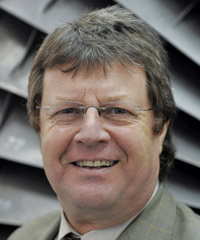Special Report: Training in the Asia-Pacific
Undercutting rivals hurt Ameco
Ameco Beijing, the maintenance arm of Air China, operates one of China’s top two training colleges for engineers. But despite rapid fleet growth among the Mainland’s carriers, it is facing major challenges in attracting third party contracts.
July 1st 2012
It has been a tough year for the Ameco Aviation College, says Walter Inkemann, joint head of the facility along with his Chinese counterpart, Gao Hongjie. Not only has the centre been forced to cut its intake of Air China apprentices – 85% of its training is conducted for its parent Ameco, which is 60% owned by Air China and 40% by Lufthansa - but third party work has been tough to attract because competitors, among the more than 40 other approved training organizations in the country, undercut its prices. Read More »
 |
| 'The training market in China is not regulated or consolidated. Everybody more or less does what he wants' |
| Walter Inkemann Co-Chief Executive Ameco Beijing |
To cut costs, Ameco management, he explained, is focussing on “increasing the efficiency” of its staff, which means a lower intake from within the company. Meanwhile, a decision last year to make the college a profit centre also has presented challenges.
“Last year we made a profit, but this year has been tough. The training market in China is not regulated or consolidated. Everybody more or less does what he wants,” said Inkemann.
“Not so many of those more than 40 Part 147 approved training organizations act under profit centre conditions like we do. So we have to focus on our cost and that definitely makes us more expensive.”
China is no longer a low-cost country, added Inkemann.“ I have to charge around $1,000 a day [per class of students] just to cover my costs. This is a lot of money for China, at a time airlines are worried about economic conditions. They don’t want to pay that much.
“I always say saving on training is the wrong way because the money you spend on training will pay back in the long term. Good quality technicians are the number one asset of a company,” he said.
All of the country’s big carriers, such as China Southern Airlines, China Eastern Airlines and Hainan Airlines, have their own training organizations, which means the 15% of third party work conducted by the college comes mainly from smaller Chinese operators.
It also has trained maintenance engineers for Vietnam Airlines. This year, the college has three groups from the Singapore Polytechnic on basic training and aircraft heavy maintenance training courses.
 |
| Apprentices in an Ameco Beijing workshop |
However, attracting more foreign business is difficult. “There are two things that make it hard to attract international customers. One is the language barrier and the other is the visa problem. You buy a B747 training course and you want to start it next week. It doesn’t work because the guy has to apply for a visa,” said Inkemann.
But competition for local business is also fierce. The Civil Aviation Administration of China (CAAC) is expecting, according to its 12th five-year plan, 3,000 additional technicians per year. It approves training organizations through nine regional administrative departments (RADs).
However, said Inkemann: “Different RADs maybe have a different opinion, although the regulation is the same.”
The Ameco head said the TAECO Training Centre, in Xiamen, Ameco’s main competitor, offers training per person per day for 250 to 260 remnimbi ($39.15 to $40.71), including accommodation. “Here, we are talking about 400 to 500 remnimbi. That’s almost double, without accommodation, just to cover our costs,” he said.
There is another troubling issue that could impact on business. The college is reviewing strategy for the next five years, preparing for new generation aircraft and engines.
Air China has 15 B787s on order. The college might have expected to train engineers to work on the Dreamliners. “But Boeing has worldwide strategic training partners and they provide the whole package - simulators for pilots, cabin crew and mechanics training. In China, Gameco [the maintenance arm of China Southern Airlines in Guangzhou] has that contract,” said Inkemann.
“That may mean we have to send our people to Gameco for 787 training. We are not very happy about that, but it is Boeing policy.”
Training Ameco staff remains the company’s number one priority. The college was the first CCAR-147 - the standard regulation on certification of civil aircraft maintenance personnel training in China - authorized by the CAAC and the first to receive the JAR-147 approval from Europe.
The college offers basic maintenance training, basic skill and type-rating training and is one of the key examination stations for personnel seeking basic or managerial licences.
It provides customer tailored courses, including aircraft structural repair, composite material repair, engine standard technology, aircraft maintenance standard practices, technical English and human factors.
The college provides vocational training based on a German system that combines theoretical and practical training. It means apprentices can do part of their training on the production line with Ameco so that when they complete their three-year course they already know the company’s procedures and work practices.
“We need more instructors, but we have plenty of facilities,” said Inkemann. “We can handle 900 to 1,000 students at one time. We have around 15,000 square metres of training facilities.”